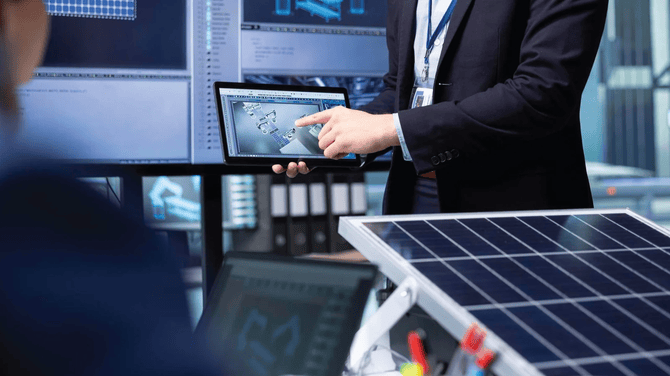Resilient Power with Energy Storage and Distribution in Renewable Systems

As renewable energy continues to redefine the global power landscape, the focus has shifted toward optimizing energy storage and distribution in renewable systems. In an era where sustainability drives innovation, the ability to efficiently store and deliver renewable power determines how quickly societies can achieve a cleaner, more stable, and affordable energy future. From smart grids to advanced battery technologies, the transformation underway promises not only energy independence but also long-term economic resilience.
The concept of energy storage and distribution in renewable systems lies at the core of a sustainable energy ecosystem. Renewable sources like wind and solar are naturally intermittent—sunlight fades and wind patterns shift—making it vital to capture excess power and store it for when demand rises. Storage technologies, from lithium-ion batteries to pumped hydro and emerging hydrogen fuel cells, ensure that this captured energy is available on demand. According to the BI Journal, the integration of these systems is revolutionizing how nations approach energy security, enabling a seamless flow between generation, storage, and consumption.
One of the greatest challenges in renewable infrastructure is distribution. Traditional power grids were not designed for decentralized energy generation, yet the renewable revolution depends on distributed networks. Modern distribution frameworks, often supported by smart grid technologies, allow for bi-directional power flow, meaning consumers can also be producers—known as “prosumers.” These intelligent systems use sensors, automation, and real-time analytics to manage fluctuations and ensure energy reliability. As highlighted in the Business Insight Journal, smart grids are the nervous system of renewable energy, ensuring power stability even during high variability in production.
Technology continues to evolve rapidly in this space. Beyond traditional batteries, innovations such as solid-state energy storage, gravity-based storage systems, and hydrogen electrolysis are reshaping the potential of renewable energy systems. These advancements not only extend the duration and efficiency of storage but also lower costs. Moreover, the development of AI-driven forecasting tools enables predictive energy management—anticipating demand and optimizing distribution accordingly. This combination of foresight and automation reduces waste, increases uptime, and strengthens energy security on a global scale.
The Business Insight Journal emphasizes that digitalization is the driving force of modern energy management. Artificial intelligence, Internet of Things (IoT) sensors, and big data analytics contribute to smarter decision-making and decentralized control. Each node in a renewable network can independently manage its own energy flows, improving resilience against outages. Businesses that understand and adopt these technologies early position themselves at the forefront of energy innovation and profitability. To explore deeper insights into sustainable business ecosystems and energy analytics, readers can visit The Inner Circle, where professionals share strategies on leveraging renewable intelligence for growth.
Economically, optimizing energy storage and distribution in renewable systems offers both immediate and long-term gains. By storing energy efficiently, organizations can reduce operational costs, stabilize prices, and minimize dependence on fossil fuels. The environmental benefits are equally profound. Optimized systems reduce greenhouse gas emissions, enhance grid reliability, and promote cleaner air and water through reduced industrial pollution. These advantages strengthen public trust in renewable transitions and encourage further investment in the sector.
However, the road to full optimization is not without challenges. Infrastructure limitations, high initial costs, and regulatory complexities remain barriers in many regions. Interoperability between new and legacy grid systems also poses difficulties in integration. Governments and private enterprises must collaborate on standardization, research funding, and innovation incentives to overcome these obstacles. As digital energy ecosystems evolve, maintaining cybersecurity and data privacy will also be critical for protecting national energy assets.
Looking ahead, the future of energy storage and distribution in renewable systems promises even greater efficiency and inclusivity. As battery prices fall and hydrogen production scales up, renewable energy will become more accessible across developing economies. Advanced materials research will yield safer and more durable storage solutions. Meanwhile, blockchain technology may enable transparent and decentralized energy trading, giving individuals more control over their energy production and consumption. These trends mark the dawn of a new era—one where energy is not merely consumed but intelligently managed and shared.
For more info https://bi-journal.com/optimizing-energy-storage-and-distribution-in-renewable-systems/
In conclusion, optimizing energy storage and distribution in renewable systems is the foundation of a sustainable, intelligent, and equitable energy future. It merges technology with environmental stewardship and economic growth. Through innovation, digitalization, and collaboration, humanity can move closer to a carbon-neutral world. As emphasized by the BI Journal, the journey toward optimized renewable systems is not just a technological mission—it’s a transformation in how we power life itself.
This news inspired by Business Insight Journal: https://bi-journal.com/
- Art
- Causes
- Crafts
- Dance
- Drinks
- Film
- Fitness
- Food
- Games
- Gardening
- Health
- Home
- Literature
- Music
- Networking
- Other
- Party
- Religion
- Shopping
- Sports
- Theater
- Wellness


